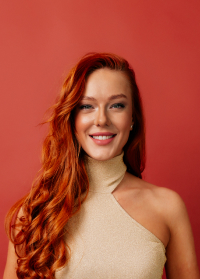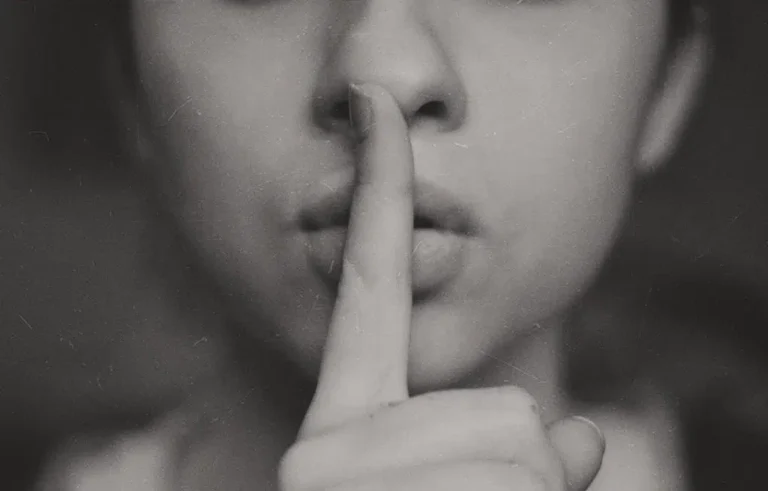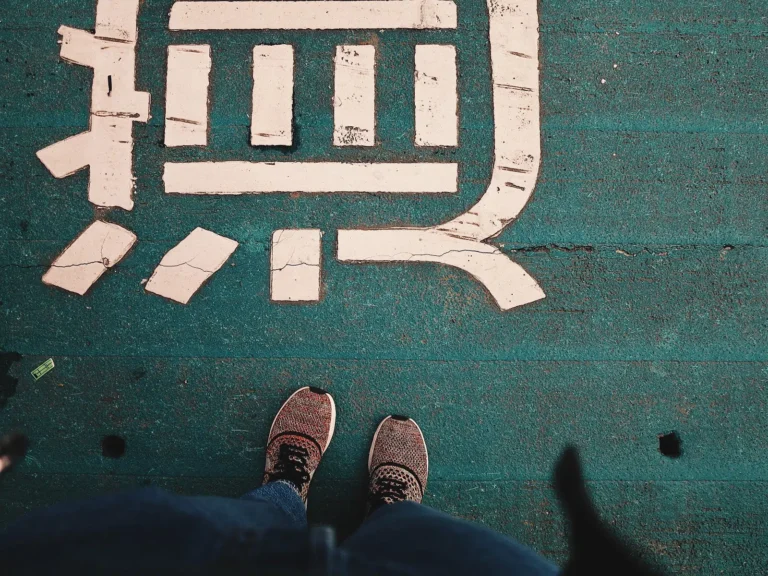Are you skilled in the arts – painting, printmaking, photography, video, crafts, or architecture? If so, you are probably a visual artist, and you may not even realize it.
For creative right-brain individuals, this type of work oftentimes comes naturally without trying. Yes, it takes years to master a craft, but oftentimes visual artists find this type of work easy. They can improve, but they were already skilled to begin with.
Let’s jump right in and explore how you can take your passion for the arts and turn that into a career as a freelance visual artist.
Jump To:
- What is a Visual Artist?
- Famous Visual Artists
- Skills and Qualifications
- Working Conditions
- Visual Artist Salary
- Jobs and Career Progression
- What’s it Really Like?
What is a Visual Artist?
A freelance visual artist is commissioned to plan, design and execute the artistic rendering of traditional and digital artwork in various forms, for the purposes of brand communication or the conveyance of a visual message.
The area of visual art design exists as a sub-sector of the vast remote graphic design industry, but with much more of a free rein on conceptualization and delivery of the art project.
Whereas a graphic designer will be given a brief along the lines of a pre-existing format for the client to use, a visual artist is responsible for creating that framework, and for engineering the concept behind the finished product.
It is a free-ranging job where the artist will work with the client to establish a method, theme and channel for the finished project. They must be open-minded and creative, being able to use elements of everyday life to explain visually more ambiguous concepts.
Companies will typically have a visual director responsible for a team of graphic designers, but a freelance visual artist is responsible for the whole process, from conception to conclusion. They will work on short or long term contracts, agreeing a specification for a visual project, and subsequently presenting their work.
Because of the “one man band” nature of the work, they must also travel to client meetings, handle their ongoing diary of forthcoming work, and eventually administer all of the delivery and invoicing for the finished project.
Responsibilities
- Take the project specification and consider ways for the eventual goal to be successfully communicated.
- Design and implement an artistic style, method and programme of delivery for the finished piece.
- Supply materials in a format which is suitable for the client, be it digital or in hard copy.
- Communicate with the client during the relationship to ensure demands are being complied with.
- Actively seek new business and implement a successful strategy of work and re-work.
Famous Visual Artists
You might be wondering who does this type of work. There are plenty of famous visual artists who have taken their passion for their work and turned it into a lucrative full-time career.
David Choe, a very skilled graffiti artist, is one of the most famous of all. Choe famously painted the first Facebook offices in 2005, but instead of taking cash, he elected to be paid in Facebook stock.
The company initially approached him and offered him $60,000 in cash for his work, but he instead asked for 3.7 million shares in the company. At the time, people thought he was crazy, but since then the stock has risen significantly. He is now worth hundreds of millions of dollars.
While many have made their mark in the modern world, there are many other visual artists that you might not think of either. These include the greats – Michelangelo, Rembrandt, Pablo Picasso, Leonardo da Vinci, and Monet – just to name a few.
Skills and Qualifications
Whilst it is true that there are some visual artists operating successfully without formal academic qualifications, it is generally assumed that a degree in design, digital art or visual art is required in order to be successful.
You don’t need a business license since this is such a creative role, however, a university degree will equip the candidate with the required knowledge in order that they can effectively plan and orchestrate finished artwork to a professional standard.
Graduates often elect to go back to university for a one year post-graduate diploma in business studies, as this forms a key link in being able to manage effective business relationships and implement conceptual design in line with a client’s key message or marketing strategy.
- Understanding of client’s demands for successful channel marketing.
- Complete understanding of various visual art forms.
- Ability to seek inspiration from everyday forms, as well as more far-reaching, unusual concept art.
- Good understanding of marketing objectives, strategy and advertising implementation.
- Keep up to date with movements in the art world, to avoid repetition or stagnation.
Many visual artists begin working as traditional graphic designers for established companies once they leave university. This can be very useful in giving them the skills they need in order to turn their creative ability towards successfully delivering a project brief.
Graphic designers who wish to go on to become freelance artists quickly find the constraints of project work for someone else’s company becomes very restrictive, and so seek to find their own clients whilst still in the full-time employ of a design house.
Working Conditions
Most freelance visual artists work from home, so the ability to be self-motivated is paramount.
Working from home is generally considered to be a low-risk activity as there are few threats to health from a safety point of view. Due to the nature of the work, client site meetings are regular, and so the designer must usually have access to a vehicle and be prepared to travel often.
The job can be quite stressful, as it is very difficult to develop a creative concept on a limited time-line. For this reason, busy visual artists find they have less and less time for free-thinking, which can often hinder the creative process for existing or forthcoming project builds.
How Much Do Visual Artists Make?
Due to the freelance nature of the job, there is no typical salary as such, although a busy visual artist working in the UK Midlands can expect to earn between £15,000 and £25,000 per year.
This increases quite dramatically if the freelancer is able to relocate to London, where freelance earnings can quite easily breach £40,000 per annum. It is down to the independent artist to be able to find new clients and agree contracted rates for single projects.
Thanks to the booming gig economy, visual artists can earn even more money when they sell art online.
Online platforms like Etsy, Zibbet, and Artfire take the hassle out of the manual sale process, meaning artists are protected with features such as escrow, buyer feedback, and more.
Visual Artist Jobs and Career Progression
As the role is freelance, there are no major employers as such. This type of work is largely contract-based, or for more established visual artists, they create works that they can sell to their fanbase and followers.
The salaried, nine-to-five side of being a visual artist typically involves working as a graphic designer for a company, although this is far more constrained in terms of creative flexibility, and requires a significantly different skill set.
Freelance visual artists can also navigate into other lines of work, including freelance web development, painter and decorator, or even remote graphic design.
Related Jobs
- Graphic Designer
- Artist’s Assistant
- Creative Director
- Artist Manager
- Storyboard Artist
- Digital modeller
- Digital retouching specialist
What’s it Really Like?
Jodie McGuiness is a freelance visual artist living in Leicestershire, UK. Her work has been the subject of a solo gallery exhibition in the city.

What made you decide to choose to get into this sort of career?
I started my design journey as a presentations/DTP (desk top publishing) operator for several of the top five blue chip companies in London.
Although the pay was extremely good, I was not getting enough freedom to express my own creativity, so I started doing shift work as a freelance graphic designer. This allowed me to go back to college and study Graphic Design and Illustration in more depth, and push my own creativity.
After I completed the course, I went on to study Interior Design at Greenwich College, and then on to an interior design degree at London Metropolitan University.
After a year, I realised I wanted to work for myself as a visual artist, and needed to find a course that combined design skills with business management skills, hence graduating 2009 from De Montfort University with Design Management & Innovation degree.
Do you have a standard day or a standard type of ‘exercise’?
I tend to start my day by looking for inspiration and keeping up with art and design trends on the web. I have many great sites and artists bookmarked.
It is also important to stay connected with like-minded people; I cannot stress enough how important it is to see what’s going on out there, see what other people are doing, what you like and what you don’t like and always question, “why”? This is one of the key ways to ensure your own work has originality, and subconsciously it helps to create your own unique style.
I tend then to check emails and get any of the business things done next, so I can have the rest of my day free to switch over to the creative side, although I do tend to be more creative late at night and in the early hours of the morning; I find my music combined with the tranquillity of this time of day helps me to become totally absorbed in what I’m doing with no distractions at all.
If I am working on a design project for a client, that is a completely different process. I listen to what the client wants, but more importantly, you have to become skilled in picking up what they are not saying. Half the time, clients naturally go for their own personal visual preferences, i.e. what colours they like, whether they like modern or traditional design and so on.
As a designer, your job is to research what’s already been done, and most importantly, research the target audience of whom the design is aimed at. You have to have confidence in the route your design takes, and have great communication skills in order to sell it to your clients effectively.
What is the most common type of problem/call-out/enquiry you must attend to?
I would say the most common type of problem is clients wanting a ‘little logo’ design. A logo is the only visual identity customers have to relate to a company. A logo design is never a ‘little’ job – it takes a lot of research, analysis and time to effectively communicate a company’s brand values all in one design.
My advice is to educate your client to understand the importance of their logo. My second tip would be to ensure your fee reflects the time, effort and research you carry out on such a project. There is a huge difference between a good designer and a bad one, and this always reveals itself in the finished design.
What do you like most about the job?
Being able to constantly switch between designer mode and artist mode. Although both creative, as a designer I work to a brief given by the client, but as an artist I have complete freedom to push my own creativity with no boundaries. It comes more from my heart and soul, and so far, people seem to like and appreciate my art.
What do you like least about the job?
The inconsistency can be a bit scary at times. Sometimes I have a few projects on the go, but at other times it could be quiet for a month or two. But I use this time as an opportunity to devote myself solely to my artwork, and networking for new customers and contacts.
I have been fortunate enough to be able to juggle finances until the next project comes along. If security, consistency and stability are top priorities for you, then maybe this is not the best route for you to take.
What are the key responsibilities?
Being a freelance designer means you are also your own marketing manager, accountant, sales person and administrator; you are solely responsible for your own success. Most creative people (myself included) wish they had someone to do all these jobs for them, so even more time could be ‘creative’ time.
Good art and design can never be completed in a hurry or with little thought. Personally, procrastination is part of my creative thought process.
What about academic requirements? Any formal demands, eg- A Levels?
Start with foundation courses or access courses in design, photography, illustration, etc. The more creative you can be, the more chance you will have to develop your own creativity with confidence and style.
Having said that, I also believe that you do not necessarily have to have formal qualifications to be a great artist; you may just have a natural flair. Put your work out there and see what people think of it. This may help you decide whether you need formal training or not, although it certainly helped me.
What is the starting salary and how does this increase over time with promotion?
If you worked as a junior designer for an SME, then the salary starts at around £15,000 – £17,000. Mid-weight designers range from £22-£25,000, whilst senior designers can earn £30-40,000.
Many senior designers can progress on to become studio managers or art directors, and the salaries dramatically increase. Although the more traditional ‘graphic designer’ route is hugely competitive, it can be very prosperous for those who have drive, flair and ambition.
This is specific to those people who want to work for companies full-time; being a self-employed freelancer is a different matter entirely.
As a new artist, I have had a 2-week-long, solo exhibition in the UK, and successfully sold some of my artwork, which obviously helps. I would not recommend choosing becoming a freelance artist as a full-time career choice unless you have financial support from family, or have other means of income you can fall back on.
What are the most important qualities an applicant must should possess?
The ability to be able to spend a large amount of time working alone, but also to possess good communication skills, as you need to justify your designs and present them to clients. Good negotiation skills for clients and printers alike are also required.
Be open to constructive criticism, and enjoy being a problem-solver by coming up with great solutions. You are literally showing people the contents of your mind and imagination, which sometimes makes you feel vulnerable, so be confident with what you produce, and don’t be over-sensitive about other people’s opinions.
Above all, you have to have a passion for what you do, as this certainly shows in the work you produce. Good Luck.








